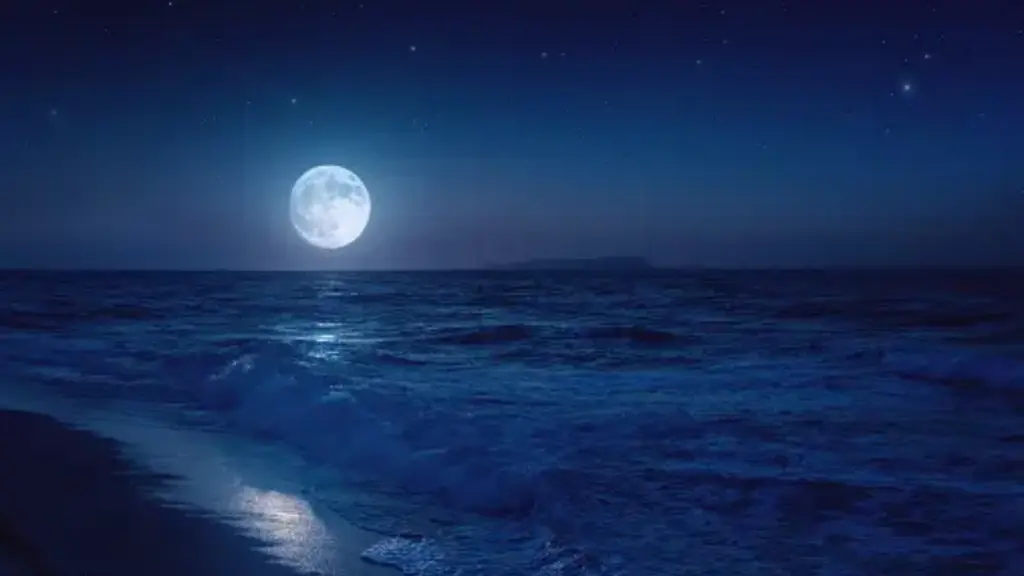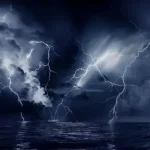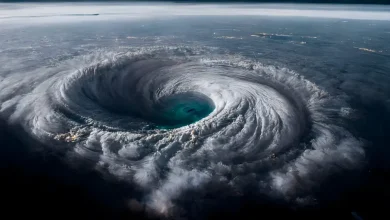Ocean Tides: The Rhythmic Movements of the Sea

Ocean tides are the regular rise and fall of sea levels caused by the combined gravitational forces exerted by the Moon, the Sun, and the rotation of the Earth. These tidal movements have been a natural part of Earth’s environment for millions of years, influencing coastlines, ecosystems, and human activities. In this article, we will explore what causes ocean tides, how they work, and the different types of tides that shape our oceans.
What Causes Ocean Tides?
The primary driving force behind ocean tides is the gravitational pull of the Moon. As the Moon orbits Earth, its gravity pulls on the planet’s oceans, causing water to bulge out on the side facing the Moon. This bulge creates a high tide.

On the opposite side of Earth, another high tide occurs due to the centrifugal force caused by Earth’s rotation, which creates a second bulge. As Earth rotates, different parts of the planet move through these tidal bulges, resulting in the rise and fall of sea levels that we experience as tides.
The Sun also plays a role in tides, though its effect is weaker than the Moon’s due to its greater distance from Earth. When the Sun, Moon, and Earth align during the full moon and new moon phases, the gravitational forces of the Sun and Moon combine, creating especially high and low tides known as spring tides. In contrast, when the Sun and Moon are at right angles to each other, their gravitational forces partially cancel out, leading to neap tides, which are weaker and less pronounced.
How Do Ocean Tides Work?
Tides occur in a predictable cycle, with each coastal area experiencing two high tides and two low tides within roughly a 24-hour period. This cycle is influenced by several factors, including the position of the Moon, the geography of the coastline, and ocean currents.
As the Earth rotates, coastal areas are alternately pulled into the tidal bulge (high tide) and then out of it (low tide). The timing of the tides can vary depending on the location and the shape of the ocean basin. In some regions, the difference between high and low tides is dramatic, while in others, the variation in water level may be minimal.
 Catatumbo Lightning: Witness the Phenomenon
Catatumbo Lightning: Witness the Phenomenon
Tidal Cycle
The time between one high tide and the next is approximately 12 hours and 25 minutes, making the complete tidal cycle—two high tides and two low tides—about 24 hours and 50 minutes long. This is because the Moon takes roughly 24 hours and 50 minutes to complete its journey across the sky relative to a fixed point on Earth. The tidal cycle is thus slightly longer than a regular Earth day.
Types of Tides
While the basic mechanism of tides remains the same, different types of tides occur based on the interaction between the Moon’s gravitational pull, the position of the Sun, and local geographical factors.
Semidiurnal Tides
Semidiurnal tides are the most common type, with two high tides and two low tides occurring each day. The height of the two high tides is usually similar, as is the case with the two low tides. This type of tide is typically found along the eastern coast of North America, most of Europe, and Africa.
Diurnal Tides
Diurnal tides occur when there is only one high tide and one low tide each day. This type of tide is less common and can be found in parts of the Gulf of Mexico, Southeast Asia, and some Arctic coastlines. The timing of these tides is roughly 24 hours apart.
Mixed Tides
Mixed tides occur when two high tides and two low tides happen in a day, but the heights of the tides vary significantly. In areas that experience mixed tides, one of the high tides is higher than the other, and the same goes for the low tides. Mixed tides are common along the Pacific coast of the United States and in parts of South America.
The Impact of Ocean Tides
Tides have a profound impact on both natural ecosystems and human activities. Here are some of the ways tides influence life on Earth:
 Firefly Synchronization: A Mesmerizing Phenomenon in Biology and Physics
Firefly Synchronization: A Mesmerizing Phenomenon in Biology and Physics
Marine Ecosystems
Many marine organisms are adapted to the tidal rhythms of their environment. For example, creatures living in intertidal zones—the area between high and low tide—experience regular exposure to air and water. These organisms, such as crabs, sea stars, and barnacles, have adapted to survive both in and out of water. Tides also affect the feeding, breeding, and migration patterns of various species, including fish and seabirds.
Coastal Erosion
Tidal movements contribute to the erosion and shaping of coastlines. The constant rise and fall of water levels can wear away rocks and sediment, altering the landscape over time. In some cases, strong tidal currents can create natural harbors and inlets, while in other areas, tides can lead to the erosion of beaches and coastal cliffs.
Human Activities
For centuries, humans have relied on tides for activities such as fishing, navigation, and coastal development. Fishermen often use tidal patterns to time their activities, while sailors and shipping companies rely on tide charts to plan their routes. In addition, tidal energy is being harnessed as a renewable energy source, with tidal power plants generating electricity by capturing the kinetic energy of moving water.
Tidal Bores and Other Phenomena
Tides can give rise to fascinating natural phenomena, one of which is the tidal bore. A tidal bore occurs when a rising tide creates a wave that travels up a river or narrow bay. These waves can be quite large and are a spectacular sight. Tidal bores are rare but can be seen in places like the Amazon River in Brazil, the Severn River in England, and the Qiantang River in China.
Another phenomenon is king tides, which are exceptionally high tides that occur when the Earth is closest to the Sun (perihelion) or when the Moon is closest to Earth (perigee). These tides can cause flooding in coastal areas, especially during stormy weather.
Ocean tides are one of the most powerful and predictable forces on Earth, driven by the gravitational interactions between the Earth, Moon, and Sun. These rhythmic movements of the sea shape coastlines, influence marine ecosystems, and impact human activities from fishing to energy production. Whether you’re watching the tide roll in on a beach or relying on tide charts for navigation, tides remain a constant reminder of the dynamic and interconnected nature of our planet’s systems.
 How to get rid of ants
How to get rid of ants






